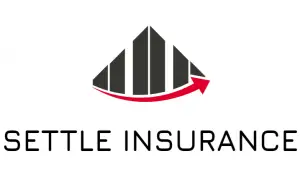“This post may contain affiliate links, if you click a link we may earn a commission if you purchase from that merchant.”
When it comes to leasing a car, there are many factors to consider. One important aspect that often gets overlooked is insurance. While standard car insurance is necessary for any vehicle on the road, it may not provide sufficient coverage for leased cars. This is where gap insurance comes in. Gap insurance is designed to fill in the “gap” between what you owe on your leased car and its actual cash value in the event of a total loss. In this article, we will explore the basics of gap insurance for leased cars, including its coverage, costs, and benefits.
Table of Contents
Key Takeaways
- Gap insurance is a type of insurance that covers the difference between what you owe on a leased car and what it’s worth if it’s totaled or stolen.
- Car insurance for leased vehicles typically includes liability, collision, and comprehensive coverage, but may not cover the full value of the car.
- Gap insurance is different from auto insurance because it specifically covers the gap between what you owe and what the car is worth.
- Rates and costs for gap insurance vary depending on the value of the car and the length of the lease, but can be as low as a few hundred dollars per year.
- Gap insurance can provide peace of mind and financial protection in the event of an accident or total loss, but may not be necessary for everyone leasing a car.
The Basics of Car Insurance for Leased Vehicles
Before diving into gap insurance, it’s important to understand the different types of car insurance required for leased vehicles. When you lease a car, the leasing company typically requires you to have both comprehensive and collision coverage. Comprehensive coverage protects against damage caused by events such as theft, vandalism, or natural disasters. Collision coverage, on the other hand, covers damage to your vehicle in the event of an accident.
While comprehensive and collision coverage are essential, they may not be enough to fully protect you in the event of a total loss. This is where gap insurance comes into play. Standard car insurance policies typically only cover the actual cash value of a vehicle at the time of loss. However, with a leased car, you may still owe more on the lease than what the car is worth. This is where gap insurance steps in to cover the difference.
Exploring the Differences Between Auto Insurance and Gap Insurance
Auto insurance and gap insurance serve different purposes and offer different types of coverage. Auto insurance covers damages to your vehicle in the event of an accident or other covered event, as well as liability coverage for injuries or damages caused to others. It also typically covers theft or vandalism.
Gap insurance, on the other hand, specifically covers the “gap” between what you owe on your leased car and its actual cash value in the event of a total loss. This means that if your leased car is totaled, gap insurance will cover the difference between what you owe on the lease and what the car is worth. This can be a significant amount, especially in the early years of a lease when the car depreciates quickly.
Understanding the Rates and Costs of Gap Insurance
The rates for gap insurance can vary depending on several factors, including the value of the leased car, the length of the lease, and the deductible chosen. Generally, gap insurance rates are calculated as a percentage of the cost of comprehensive and collision coverage. The average cost of gap insurance is typically around 5% to 6% of the annual premium for comprehensive and collision coverage.
In terms of costs, gap insurance is typically a one-time payment made upfront or added to your monthly lease payment. The cost can vary depending on the leasing company and the terms of your lease agreement. It’s important to carefully review the terms and costs associated with gap insurance before signing a lease agreement.
Examining the Coverage Offered by Gap Insurance
Gap insurance provides coverage for the “gap” between what you owe on your leased car and its actual cash value in the event of a total loss. This means that if your leased car is totaled, gap insurance will cover the difference between what you owe on the lease and what the car is worth.
For example, let’s say you have a leased car with a remaining balance of $20,000 and its actual cash value at the time of loss is $15,000. Without gap insurance, you would be responsible for paying off the remaining $5,000 out of pocket. However, with gap insurance, it would cover this difference, saving you from having to pay this amount.
Navigating the Claims Process with Gap Insurance
Filing a claim with gap insurance is a relatively straightforward process. The first step is to contact your insurance company and inform them of the total loss of your leased car. They will guide you through the necessary steps and provide you with the required documentation.
Once you have filed a claim, the insurance company will assess the value of your leased car at the time of loss and compare it to the remaining balance on your lease. If there is a gap between the two, they will reimburse you for the difference. It’s important to note that gap insurance does not cover any deductible that may be required by your auto insurance policy.
During the claims process, it’s important to keep all documentation related to your lease, including the lease agreement, payment history, and any correspondence with the leasing company. This will help ensure a smooth claims process and expedite the reimbursement.
Identifying Potential Discounts for Gap Insurance
Just like with standard car insurance, there may be potential discounts available for gap insurance. Some insurance companies offer discounts for bundling gap insurance with other policies, such as auto or home insurance. Additionally, some leasing companies may offer discounted rates for gap insurance if you purchase it through them.
To qualify for these discounts, it’s important to shop around and compare quotes from different insurance providers. Be sure to ask about any potential discounts and take advantage of them if they are available.
Evaluating the Risks of Accidents and Total Losses for Leased Cars
When driving a leased car, there are certain risks associated with accidents and total losses that need to be considered. In the event of an accident or total loss, you could be left responsible for paying off the remaining balance on your lease if you don’t have gap insurance.
Leased cars often depreciate quickly in their early years, meaning that the actual cash value of the car may be significantly lower than what you owe on the lease. Without gap insurance, you could be left with a substantial financial burden if your leased car is totaled.
Weighing the Pros and Cons of Gap Insurance for Your Specific Situation
As with any insurance product, there are pros and cons to consider when deciding whether or not to purchase gap insurance for your leased car.
One of the main advantages of gap insurance is that it provides financial protection in the event of a total loss. It can save you from having to pay out of pocket for the remaining balance on your lease if your car is totaled. This can provide peace of mind and protect your financial well-being.
However, there are also some drawbacks to consider. Gap insurance can add to the overall cost of leasing a car, as it is an additional expense on top of standard car insurance. Additionally, if you have a short-term lease or plan to purchase the car at the end of the lease, gap insurance may not be necessary.
Ultimately, the decision to purchase gap insurance should be based on your specific situation and risk tolerance. It’s important to carefully evaluate the costs and benefits and determine if it makes sense for you.
Making an Informed Decision About Gap Insurance for Your Leased Car
In conclusion, gap insurance is an important consideration for anyone leasing a car. It provides coverage for the “gap” between what you owe on your leased car and its actual cash value in the event of a total loss. While standard car insurance is necessary for any vehicle on the road, it may not provide sufficient coverage for leased cars.
By understanding the basics of gap insurance, including its coverage, costs, and benefits, you can make an informed decision about whether or not it is right for your specific situation. It’s important to carefully evaluate the risks associated with driving a leased car and weigh them against the costs of gap insurance.
Ultimately, gap insurance can provide peace of mind and protect your financial well-being in the event of a total loss. By considering the risks and benefits, you can make the best decision for your leased car and ensure that you are adequately protected.
If you’re considering getting gap insurance for your leased car, you may also be interested in learning about the best auto insurance companies. Check out this article to find out which companies offer the most comprehensive coverage and the best rates: https://settleinsurance.com/car-insurance/best-auto-insurance-companies/.
FAQs
What is gap insurance?
Gap insurance is a type of car insurance that covers the difference between the actual cash value of a car and the amount still owed on a lease or loan in the event of a total loss.
What does gap insurance cover?
Gap insurance covers the difference between the actual cash value of a car and the amount still owed on a lease or loan in the event of a total loss due to theft or accident.
Is gap insurance required for a leased car?
Gap insurance is not required for a leased car, but it is highly recommended. Most leasing companies require lessees to have gap insurance as part of their lease agreement.
How much does gap insurance cost?
The cost of gap insurance varies depending on the insurance company and the value of the car. On average, gap insurance costs between $20 and $40 per year.
When should I get gap insurance?
It is recommended to get gap insurance when leasing a car, as the value of the car depreciates quickly and the amount owed on the lease may exceed the actual cash value of the car in the event of a total loss.
Can I cancel gap insurance?
Yes, gap insurance can be cancelled at any time. However, it is important to check with the leasing company to ensure that cancelling gap insurance does not violate the terms of the lease agreement.


































